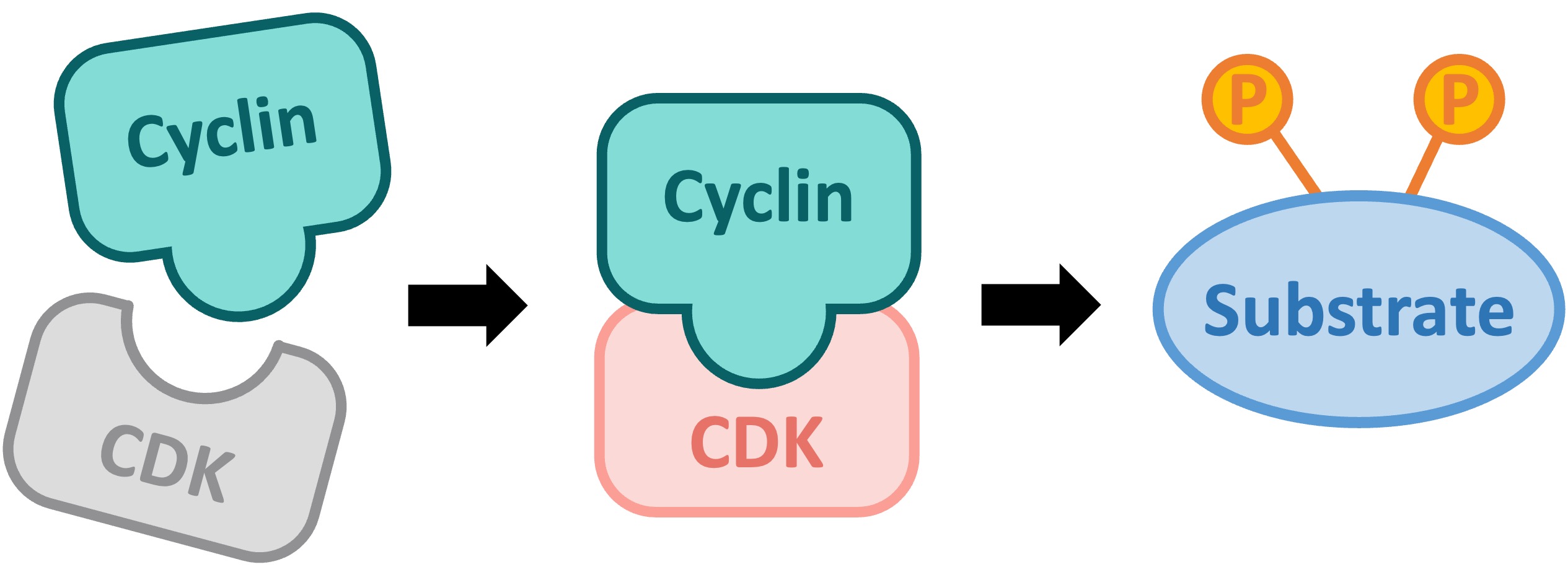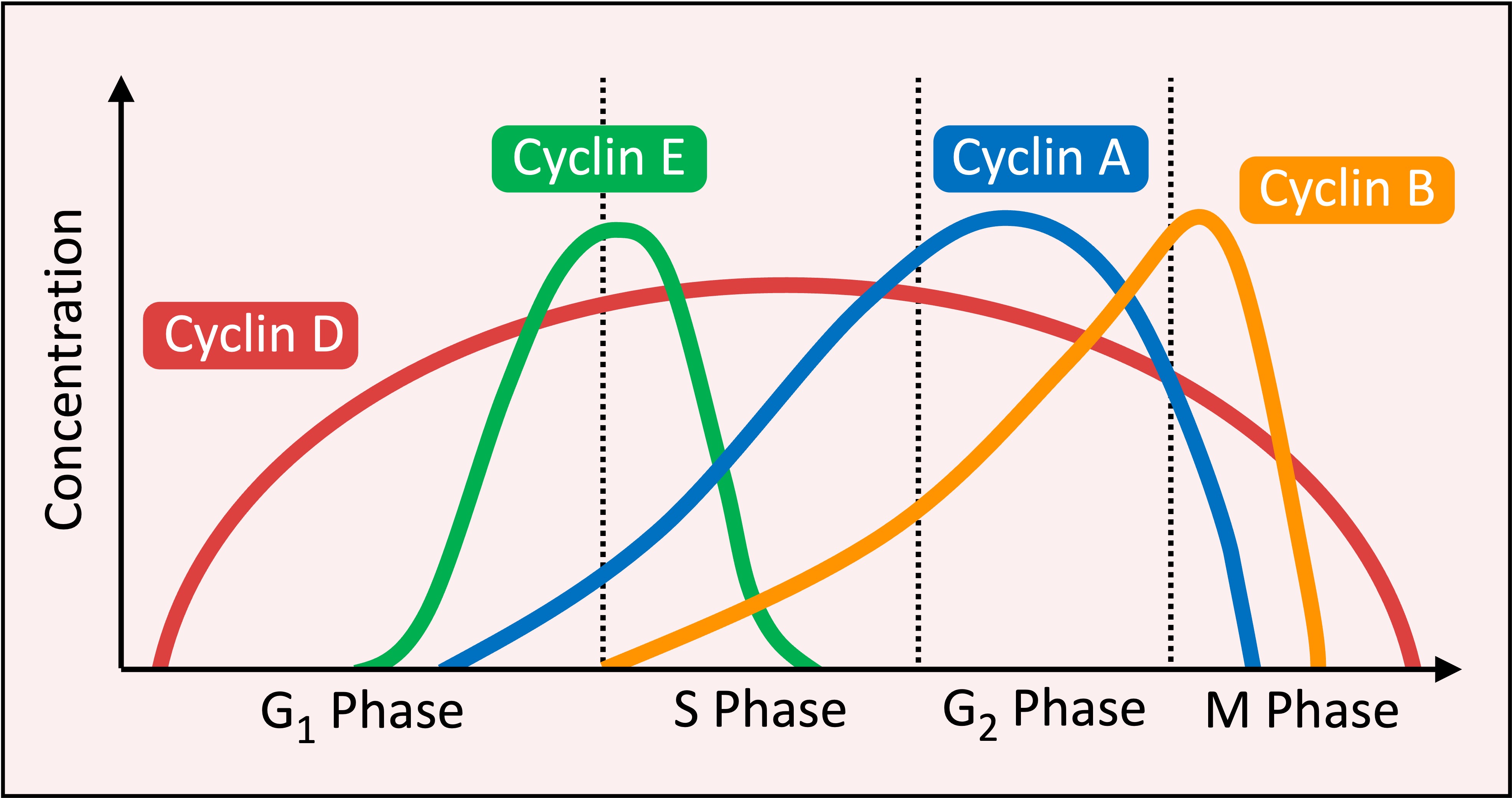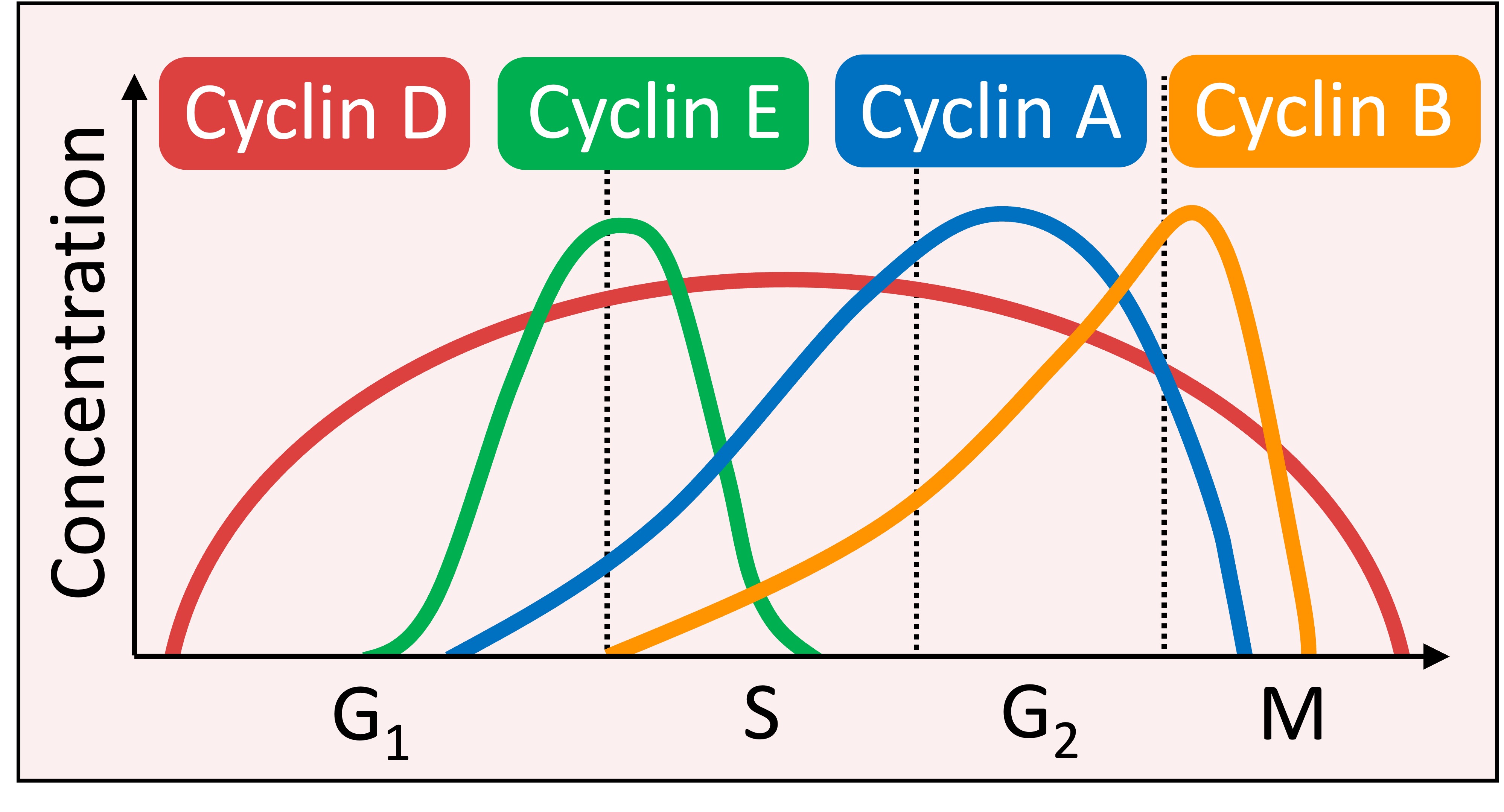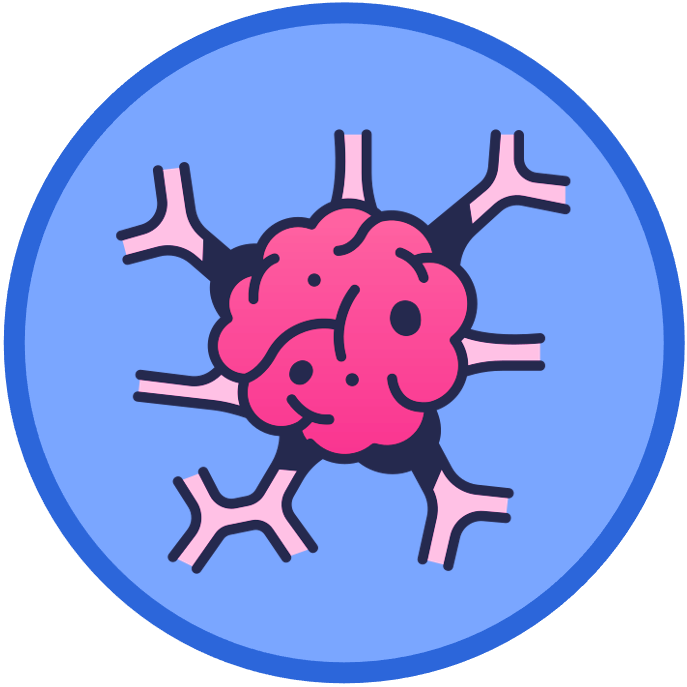

Checkpoints
The cell cycle has multiple checkpoints that ensure the fidelity and continued viability of cell proliferation
-
G1 Checkpoint: Confirms appropriate growth conditions and assesses the level of DNA damage (from ionising radiation or UV)
-
G2 Checkpoint: Determines the state of the pre-divided cell (i.e. suitable size) and identifies any faults in DNA replication
-
Metaphase Checkpoint: Ensures proper spindle assembly and correct attachment to centromeres (prevents non-disjunction events)
Cyclins
Progression through the cell cycle checkpoints is controlled by a family of regulatory proteins called cyclins
-
Cyclins activate cyclin dependent kinases (CDKs), which control cell cycle processes through phosphorylation
-
When a cyclin and CDK form a complex, the complex will bind to and phosphorylate a target protein
-
The phosphorylated target protein will trigger a specific event within the cell cycle (e.g. centrosome duplication, etc.)
-
After the event has occurred, the cyclin is degraded and the CDK is rendered inactive again

Checkpoint Control
Cyclin concentrations need to be tightly regulated in order to ensure the cell cycle progresses in a proper sequence
-
Different cyclins specifically bind to, and activate, different classes of cyclin dependent kinases
-
Cyclin levels will exceed a threshold when their target protein is required for function and remain at lower levels at all other times






